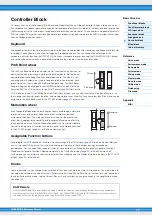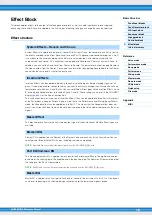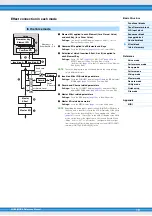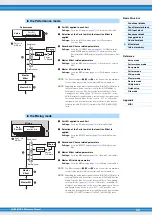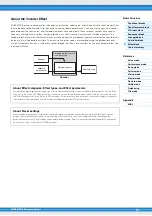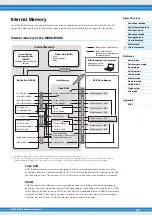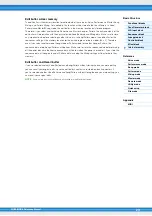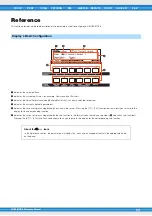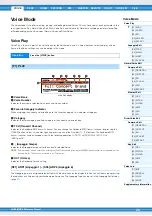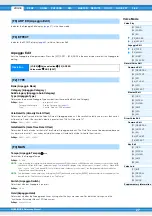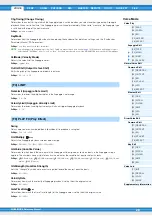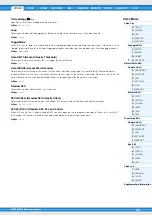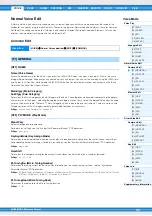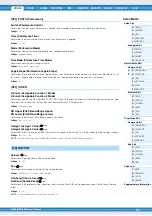
MOX6/MOX8 Reference Manual
16
These Arpeggio types are programmed specifically for use with Drum Voices, giving you instant access
to various rhythm patterns. Three different playback types are available.
Playback of a drum pattern
Pressing any note(s) will trigger the same rhythm pattern.
Playback of a drum pattern, plus additional played notes (assigned drum
instruments)
Pressing any note will trigger the same rhythm pattern. Adding notes to the one already held produces
additional sounds (assigned drum instruments) for the drum pattern.
Playback only of the played notes (assigned drum instruments)
Playing a note or notes will trigger a rhythm pattern using only the notes played (assigned drum
instruments). Keep in mind that even if you play the same notes, the triggered rhythm pattern differs
depending on the order of the notes played. This gives you access to different rhythm patterns using
the same instruments simply by changing the order in which you play the notes, when the “KeyMode”
parameter is set to “thru” or “thrudirect.”
NOTE
The three playback types above are not distinguished by category name or type name. You'll have to actually
play the types and hear the difference.
NOTE
Since these types are programmed for Drum Voices, using them with Normal Voices may not produce
musically appropriate results.
These arpeggio types are programmed primarily with Control Change and Pitch Bend data. They are
used to change the tone or pitch of the sound, rather than play specific notes. In fact, some types
contain no note data at all. When using a type of this category, set the “KeyMode” parameter to “direct,”
“thrudirect,” or “sortdirect.”
NOTE
For the displays including the “KeyMode” parameters, see the PLAY FX display of the Arpeggio Edit for Voice
), or for Song/Pattern mode (
).
Arpeggios for Drum/Percussion Voices (Category: DrPc)
Arpeggios containing mainly non-note events (Category: Cntr)
Tips for Arpeggio playback
Arpeggios not only provide inspiration and full rhythmic passages over which you can perform, they give you
quality MIDI data you can use in creating Songs, or fully formed backing parts to be used in your live
performances. For instructions on using Arpeggio, see the “Quick Guide” in the Owner’s Manual.
















